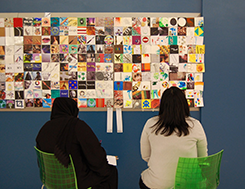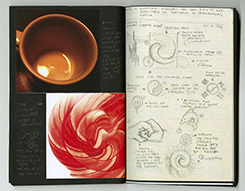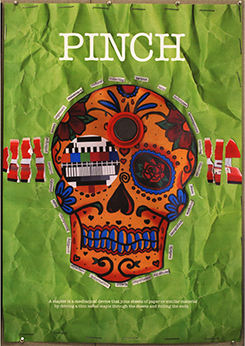
100 things completed

100 things as an exercise in observation and vocabulary usage

Student sketchbook of binary oppositions
Abstract
Graphic Design is, without doubt, a profession with a specialized and technical vocabulary. It is a profession that not only deals with the visualization of language, but must also use language to talk about design. Indeed, like doctors, lawyers and engineers, designers have developed and adapted certain vocabularies in order to allow for dialogue about design, critique of design, and/or explore the structure of design itself. It has been, for a large portion of time, a language heavily influenced and concerned with Western ways of thinking about design. How then does a design program teach and impart this knowledge to a group of students where the medium of instruction is already a second (and sometimes third) language? In what ways can content be repurposed for a new and different context, by both respecting the new context yet retaining the crucial impart of the content? The purpose of this paper is to present some of the methods we use in our sophomore class of Graphic Design at Virginia Commonwealth University in Qatar.
VCU in Qatar was established a little over 12 years ago, and has, since its inception there, struggled with and sought ways to impart the vocabulary of design to its sophomores as both a way to introduce design thinking, theory and the notion of process. While English is the language of instruction (and most are fairly proficient, if not more fluent in English than Arabic), the language of design is a new and foreign language for all of our students.
The intent of this paper will be to unpack some of the methods and means by which we teach our sophomores the language of design while they explore the design process. Using semiotics as the basic buildings blocks for the introduction of design vocabulary, coupled with a slow motion examination of process, our introductory project of 100 things at VCU in Qatar is, we feel, an interesting and unique approach to imparting this knowledge. In a project that spans nearly seven weeks of course instruction, we alight upon semiotic theory coupled with hands-on exploration that both explores and deepens our student’s understanding of design principles and vocabulary. Via lecture and intensive making, our students are guided through the design process that is both culturally sensitive, student centered in its exploration and strongly geared to making the language of design (however unfamiliar) as visible and accessible as possible.

Student poster example produced during 100 things

Student poster example produced during 100 things

Student poster example produced during 100 things
